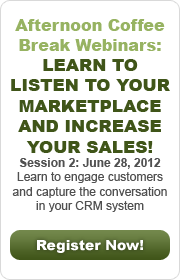 If you do not have a transparent view of your functional teams and how they are performing against key functional metrics, how do you know where to start making business process improvements? Your starting point to attack this priority is to measure your performance against agreed upon benchmarks. As Stephen Covey says, “the main thing is to keep the main thing the main thing.”
If you do not have a transparent view of your functional teams and how they are performing against key functional metrics, how do you know where to start making business process improvements? Your starting point to attack this priority is to measure your performance against agreed upon benchmarks. As Stephen Covey says, “the main thing is to keep the main thing the main thing.”
Identify your “main thing” for each individual department by focusing on the top three to five initiatives the team needs to achieve over the next year. Be sure each department bears in mind the top three to five business objectives of the company, so they can determine how they can help the company succeed. Once the top initiatives are selected, determine benchmarks that will demonstrate the initiative has been achieved or exceeded. Then measure your success against recognized external or internal benchmarks. This is typically the most difficult step; however, by tying the objectives and benchmarks with a Business Intelligence tool, you get instant visibility of where you stand and can easily track your progress. Once you have this visibility, it’s simple to retain focus on your main thing, as you have real-time information on performance against your benchmarks and you can start to make proactive and constructive interventions. Best of all you can easily demonstrate where you stand to upper management or stakeholders.
As an example, take a look at accounts receivable. Cash is king, and in these economic times the more quickly you get paid, the less it costs you. Debt collection processes need to be efficient and effective. You must have clear targets on outstanding accounts and always know when you can expect cash flow. Do you have a metric set for the length of time invoices are outstanding? Do you know the impact of not achieving these targets on your cash flow report? Setting these key metrics up is the starting point, but then accurately measuring and reporting on them is vital to the lifeblood of your business—cash.

You can start by analyzing what your debt ratio looks like today! Paying attention to your accounts receivable age analysis will reap rewards as you will be able to easily identify collectible debt, which will boost your cash flow immediately, but then why stop there? You can go a step further by setting targets for your business that give you very visible metrics that allow you to measure how successful you are at collecting cash on a daily, weekly, monthly, or quarterly basis. All businesses differ, and some may be more cash driven than others, but if you start by using a simple table of key performance indicators or a graph, as illustrated, you will get a much clearer picture of where you need to focus your efforts to collect your debt—and the better you perform, the better your cash position. For any business—small, medium, or large, the age old adage of “what isn’t measured isn’t managed” applies, and losing control of your cash flow is a surefire way to add sleepless nights when you start to be on the receiving end of your creditors’ calls.
Learn more about improving your business processes by watching this video.





 Download our corporate brochure for more facts about us, our
clients and our solutions.
Download our corporate brochure for more facts about us, our
clients and our solutions.
 Driving Revenue Growth 1
Driving Revenue Growth 1 Satisfying Customers 1
Satisfying Customers 1